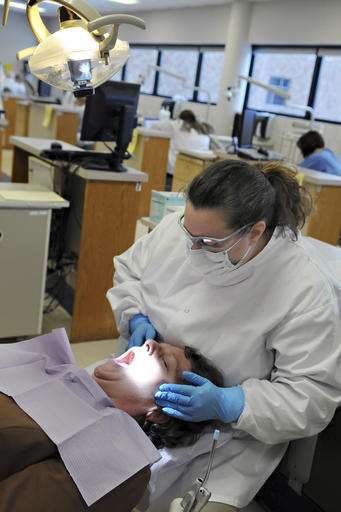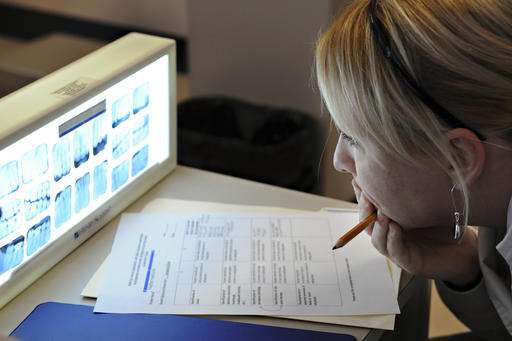They're not dentists. Would you let them fill your cavities?

Need a tooth pulled or a cavity filled? Forget the dentist. A number of states are allowing or considering letting "dental therapists," professionals with a lower level of training, do the job.
In dozens of countries and a handful of U.S. states, dental therapists also sometimes called advanced dental hygiene practitioners help fill gaps in access to oral care for low-income, elderly and disabled people, and in rural areas where few dentists practice, according to many public health advocates.
In Massachusetts, a group that lobbies on behalf of dentists has for the first time signaled a willingness to embrace the concept, though its proposal is viewed as unnecessarily restrictive by sponsors of a competing bill in the Legislature.
Dentists have long opposed the midlevel position, citing concerns over safety and supervision.
"We are not a silver bullet for helping access to dental care, but we are a great tool," said Christy Jo Fogarty, a dental therapist in Minnesota, which in 2009 became the first state to broadly authorize and establish educational and training criteria for therapists. Often compared to a nurse practitioner, the therapist can perform more common procedures than dental hygienists, while leaving more complex tasks to licensed dentists.
Fogarty, a dental hygienist for 13 years before training to become a dental therapist, said her work includes fillings, temporary crowns and extractions. She regularly provides care in schools, Head Start centers and other community settings without a dentist physically present.
"We have kids who don't have to go to an emergency room for a toothache anymore," said Fogarty, one of more than 60 therapists in Minnesota.

In Massachusetts, with a higher rate of dentists per 100,000 residents than any other state, there were more than 36,000 visits to emergency rooms in 2014 for "preventable oral health" issues, costing the health care system as much as $36 million, according to an estimate by the state's Health Policy Commission.
Dentists often do not accept Medicaid because of low reimbursement rates, and dental procedures covered by it vary from state to state.
"I can't tell you how many times I had to take my kids to an emergency room because of an abscessed tooth," said Maura Sullivan, who works for The Arc of Massachusetts, a group that advocates for people with disabilities and supports dental therapists. She said she struggled for years to find preventative dental care for her two sons, both with autism, in part because many dentists in her area would not accept Medicaid disability benefits.
Alaska has allowed dental therapists to work in tribal areas since 2004, and two other New England states, Maine in 2014 and Vermont in 2016, have since joined Minnesota in authorizing statewide programs. Proposals also are being considered in Arizona, Connecticut, Kansas, Maryland, Michigan, New Hampshire, New Mexico, North Dakota, Ohio and Texas. One recent North Dakota study found that Medicaid recipients suffered disproportionately from tooth decay and tooth loss, and conditions such as severe gingivitis.
Massachusetts dentists broke from the American Dental Association, a national organization that opposes the midlevel position, by filing a bill in January that would allow limited use of public health dental practitioners as part of a broader approach to improved oral health care.
"They could do any procedure that a dental hygienist can do, but if there is anything beyond that scope, it should be under direct supervision, which means a dentist needs to be there at the facility in case they develop a problem with an extraction or something like that," said Raymond Martin, president of the Massachusetts Dental Society.
The legislation would require practitioners to have at least two years of post-graduate level training and restrict them to serving only Medicaid patients or residents of "underserved" counties with a documented shortage of dentists.
Under a separate bill backed by Pew Charitable Trusts and other advocacy groups, dental therapists would work collaboratively with dentists but would be allowed to perform procedures under "general" rather than direct supervision—meaning a dentist would not have to be physically present. The measure would not specify the level of education for therapists but requires them to meet standards of a national dental accrediting commission.
© 2017 The Associated Press. All rights reserved.

















